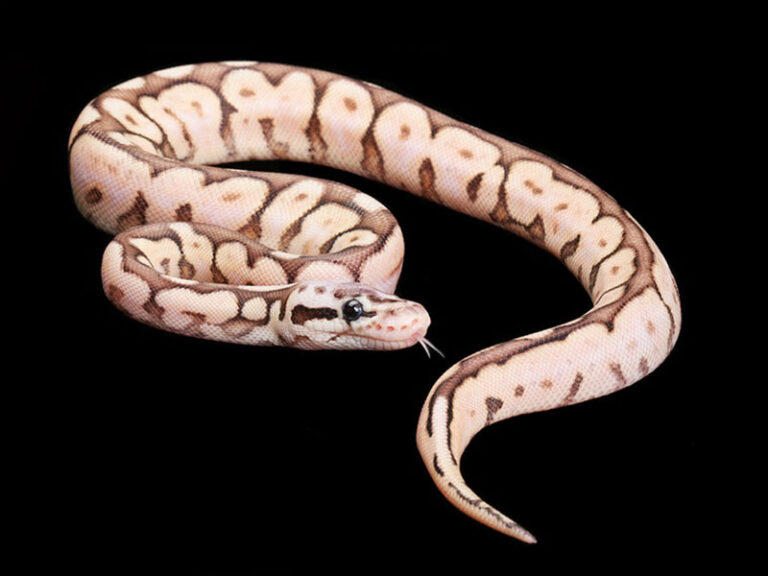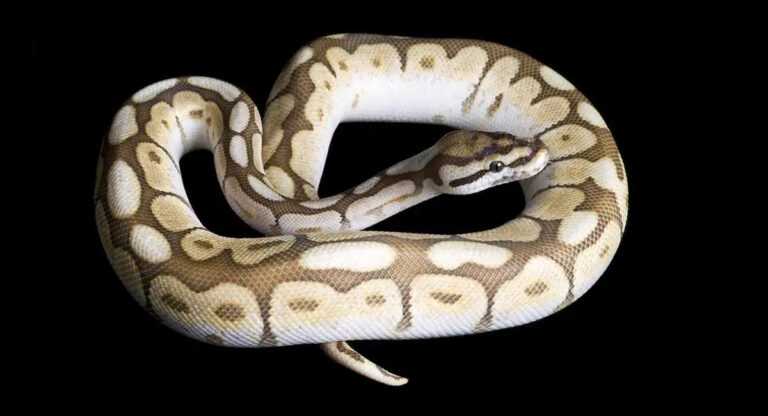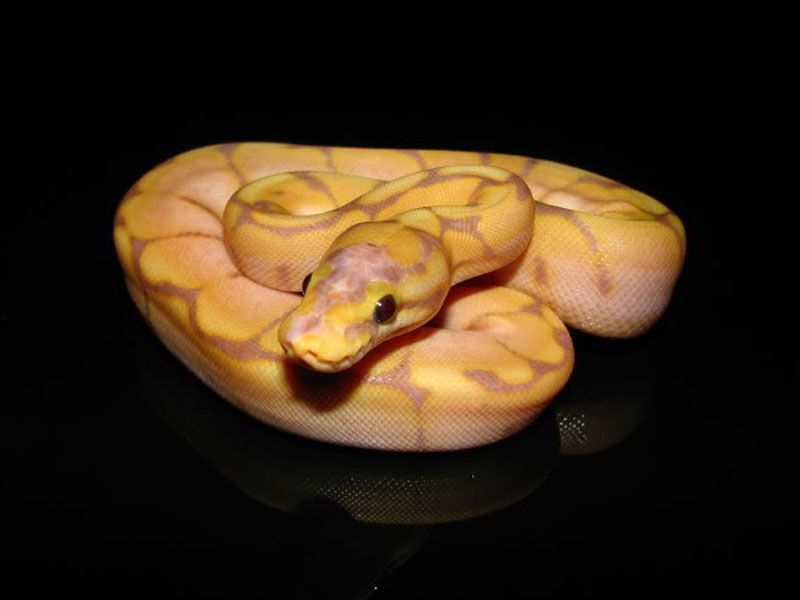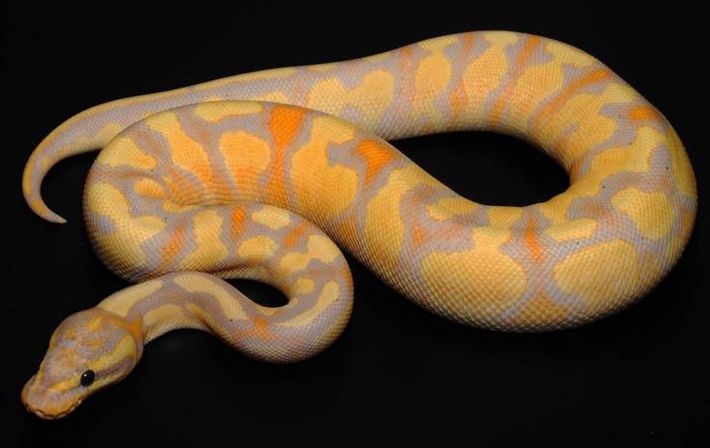Bringing home a Ball Python? You’re in for an exciting adventure! These fascinating snakes are among the most popular pet reptiles, thanks to their docile nature and manageable size. But before you welcome your new slithery friend, you need to set up the perfect Ball Python Habitat—a space that mimics their natural environment while keeping them comfortable, healthy, and stress-free.
If you’re a beginner, don’t worry! This guide will walk you through everything from enclosure size and heating to humidity and décor. Let’s dive in and make sure your new pet has the best possible home!
Choosing the Right Enclosure: Size & Material Matter
First things first—what kind of enclosure should you get? Ball Pythons aren’t the most active snakes, but they do need enough space to move around comfortably.
Ideal Enclosure Size
- Hatchlings: 10-20 gallons (smaller enclosures help them feel secure)
- Juveniles: 20-30 gallons
- Adults: 40+ gallons (a 36”x18”x18” tank is a great standard)
A larger enclosure isn’t necessarily better for a young snake—it can make them feel exposed and stressed. But as they grow, you’ll need to upgrade.
When I set up my Ball Python’s habitat, I made sure to create the perfect environment to keep it happy and healthy. If you’re curious about my setup and care routine, check out our latest post on How I Care for My Ball Python and Created the Perfect Habitat!
Enclosure Materials: What Works Best?
There are a few options when it comes to housing your Ball Python:
✅ Glass Terrariums – Great visibility but can have difficulty with humidity retention. A humidity-increasing substrate solves the problem!
✅ PVC Enclosures – Great at humidity and temperature control; usually the best option for Ball Pythons.
✅ Wooden Enclosures – Good insulation but may warp after a while because of high humidity.
✅ Plastic Tubs – Cheap and good for hatchlings or breeders, but not as aesthetically pleasing.
For most newbies, a glass terrarium or PVC enclosure is the route to take!
Temperature & Heating: Just Right
Ball Pythons are cold-blooded, and they depend upon outside heat sources to maintain their body temperature. Your system must have a thermal gradient so your snake can travel between hotter and colder spots.
Temperature Zones:
- Basking Spot: 88-92°F (32-33°C)
- Ambient Temperature: 78-82°F (26-28°C)
- Cool Side: 75-80°F (24-27°C)
- Nighttime Low: Never less than 70°F (21°C)
Heating Options:
- Under-Tank Heat Mats (UTH): Great for belly heat, but must be controlled with a thermostat to prevent burns.
- Ceramic Heat Emitters (CHE): A solid choice for overhead heating, especially in glass tanks.
- Radiant Heat Panels (RHP): Ideal for PVC or wooden enclosures, offering even warmth.
- Heat Lamps: Work, but they can dry out the habitat quickly—pair with proper humidity control.
Pro Tip: Never use heat rocks! They can overheat and burn your snake.
Humidity: The Key to a Happy, Healthy Snake
Humidity is non-negotiable for Ball Pythons. Too dry? You’ll have shedding problems. Too damp? You risk respiratory infections.
Ideal Humidity Range:
- 50-60% for normal conditions
- 65-75% during shedding periods
How to Maintain Humidity:
✔ Use a coconut fiber, cypress mulch, or aspen bedding—they hold moisture well.
✔ Mist the enclosure lightly when humidity drops too low.
✔ Add a large water bowl (helps with humidity and gives your snake a soaking spot).
✔ Cover part of the screen lid with foil or plexiglass to reduce moisture loss.
✔ Use a reptile fogger or humidifier if needed in dry climates.
Substrate: What’s the Best Bedding for a Ball Python?
The substrate (or bedding) you choose plays a major role in maintaining humidity and keeping your Ball Python comfortable. Some substrates are better than others—so let’s break down the best and worst options.
Best Substrates for a Ball Python Habitat
✅ Coconut Fiber (Eco Earth, ReptiChip) – Retains humidity well and is simple to clean.
✅ Cypress Mulch – Keeps moisture, is natural in appearance, and perfect for humidity control.
✅ Aspen Shavings – Good choice, but doesn’t retain humidity as much as others.
✅ Repti-Bark (Fir Bark) – Beautiful to look at and retains moisture, although it might be expensive.
Avoid These Substrates!
Pine or Cedar Shavings – The oils can cause respiratory problems.
❌ Sand or Gravel – Doesn’t retain humidity and can cause impaction if ingested.
❌ Paper Towels/Newspaper – Okay for quarantine tanks but not ideal for long-term use.
Choose a substrate that fits your humidity needs while keeping your snake safe and comfortable!
Décor & Hides: Making Your Snake Feel Secure
A bare enclosure can stress out your Ball Python. In the wild, they spend most of their time hiding—so your setup should give them plenty of places to feel secure.
Must-Have Items for a Ball Python Habitat Setup
At least two hides (one on the warm side, one on the cool side)
✔ A sturdy water bowl (big enough for soaking but not easy to tip over)
✔ Climbing branches or décor (even though they’re not arboreal, they enjoy exploring!)
✔ Artificial or live plants (to add coverage and create a natural feel)
Make sure the hides are snug enough to make your Ball Python feel secure. Many keepers love using half-logs, cave hides, or even DIY plastic container hides.
Lighting: Do Ball Pythons Need It?
Ball Pythons are nocturnal, meaning they don’t need special UVB lighting like some reptiles do. However, a regular day-night cycle helps regulate their behavior.
Best Lighting Setup:
☀ Daytime: 12 hours of ambient room light or low-wattage LED lighting.
🌙 Nighttime: No extra light needed—just room darkness.
If you’re using a heat lamp, make sure it’s turned off at night to mimic a natural day-night cycle.
Handling & Enrichment: Keeping Your Snake Happy
A well-set-up habitat is crucial, but so is interacting with your snake! Ball Pythons are generally docile and can be handled regularly once they’re comfortable in their new home.
Handling Tips:
🐍 Wait at least a week after bringing them home before handling.
🐍 Always wash your hands before and after handling.
🐍 Support their body fully—never grab or squeeze them.
🐍 Handle them 1-2 times a week to keep them socialized.
🐍 Avoid handling after feeding to prevent regurgitation.
Common Ball Python Habitat Mistakes to Avoid
🚫 Lack of proper heating and humidity control – Leads to health issues.
🚫 Not enough hiding spots – Your snake needs security!
🚫 Using unsafe substrates like pine or sand – These can be harmful.
🚫 Leaving a heat lamp on 24/7 – It messes with their natural cycle.
Final Thoughts
Creating the perfect Ball Python habitat is all about providing a safe, comfortable, and natural environment for your pet. Start with the right enclosure, like a PVC or glass terrarium, and make sure the temperature stays between 75-92°F using a heat mat or ceramic heater controlled by a thermostat. Humidity levels should be 50-60% (higher during shedding) to keep your snake healthy and prevent shedding issues. Using the right bedding—like coconut fiber or cypress mulch—helps maintain moisture, while essential hides, a sturdy water bowl, and climbing décor make your snake feel secure and enriched.
Avoid common mistakes like using unsafe bedding (pine, cedar, or sand) or improper heating methods, which can harm your snake. A well-maintained habitat will keep your Ball Python happy and stress-free. If you’re looking for expert care guides, high-quality reptile supplies, and trusted advice, check out Universe Reptile your go-to source for everything Ball Python!
frequently asked questions
Q: What is the best tank setup for a Ball Python?
A: A 40-gallon glass or PVC enclosure with a heat gradient, adequate humidity, and multiple hides is perfect. A big water bowl and climbing décor round out the system.
Q: Do Ball Pythons require a heat lamp?
A: Not at all! Under-tank heaters (UTH) or ceramic heat emitters (CHE) are more suitable as Ball Pythons take in heat via belly.
Q: Can I use a heat mat without a thermostat?
A: No! A heat mat should always be wired into a thermostat to avoid burns and overheatings.
Q: What humidity would a Ball Python enclosure ideally be?
A: 50-60% under normal conditions and 65-75% under shedding.
Q: May I place artificial plants in my Ball Python enclosure?
A: 50-60% under normal conditions and 65-75% under shedding.














